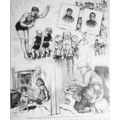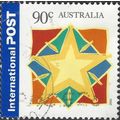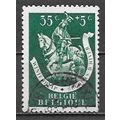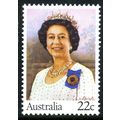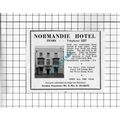Bath - Great Pulteney Street - early undivided back postcard c.1901
- Condition : Used
- Dispatch : 2 Days
- Brand : None
- ID# : 144242900
- Quantity : 1 item
- Views : 245
- Location : United Kingdom

- Seller : justthebook (+1712)
- Barcode : None
- Start : Wed 04 Nov 2015 08:46:23 (EDT)
- Close : Run Until Sold
- Remain : Run Until Sold
Checks/Cheques
 for 1 item(s) edit
for 1 item(s) edit
Shipping Calculator
More Listings from This Seller view all
Seller's Description
- Postcard
- Picture / Image: Great Pulteney Street, Bath - undivided back postcard [these were the norm before the rules changed on writing the message on the address side in 1902]
- Publisher: Friths
- Postally used: no
- Stamp: n/a
- Postmark(s): n/a
- Sent to: n/a
- Notes / condition:
Please ask if you need any other information and I will do the best I can to answer.
Image may be low res for illustrative purposes - if you need a higher definition image then please contact me and I may be able to send one. No cards have been trimmed (unless stated).
------------------------------------------------
Postage & Packing:
Postage and packing charge should be showing for your location (contact if not sure).
No additional charges for more than one postcard. You can buy as many postcards from me as you like and you will just pay the fee above once. Please wait for combined invoice. (If buying postcards with other things such as books, please contact or wait for invoice before paying).
Payment Methods:
UK - PayPal, Cheque (from UK bank) or postal order
Outside UK: PayPal ONLY (unless otherwise stated) please. NO non-UK currency checks or money orders (sorry).
NOTE: All postcards are sent in brand new stiffened envelopes which I have bought for the task. These are specially made to protect postcards and you may be able to re-use them. In addition there are other costs to sending so the above charge is not just for the stamp!
I will give a full refund if you are not fully satisfied with the postcard.
----------------------------------------------
Text from the free encyclopedia WIKIPEDIA may appear below to give a little background information (internal links may not work) :
*************
Great Pulteney Street is a grand thoroughfare that connects Bathwick on the east of the River Avon with the City of Bath, England via the Robert Adam designed Pulteney Bridge. Viewed from the city side of the bridge the road leads directly to the Holburne Museum of Art that was originally the Sydney Hotel where tea rooms, card rooms, a concert room and a ballroom were installed for the amusement of Bath's many visitors.
Commissioned by Sir William Pulteney, it was designed by the architect Thomas Baldwin and completed in 1789. The Corporation of Bath wanted to expand the boundaries of the City, and Sir William's estate was conveniently situated just over the other side of the River Avon.
At over 1,000 feet (300 m) long and 100 feet (30 m) wide, the road itself is the widest and the grandest in Bath. However, the architect, Baldwin, designed only the façades of buildings. A variety of owners acquired plots of land along the new street and built the actual structures behind the façades, so that while the street has a visual unity, the buildings have different internal features, some having been designed as private houses and others as hotels.
It was foreseen that, along with the access provided by Pulteney Bridge, the eastern side of the Avon would become popular with speculators and developers. This appears not to have been the case, and in the event no further developments were made on this scale. Indeed, one of the side streets off Great Pulteney Street, called Sunderland Street, is the shortest street in the city, with only one address. After 1789, the financial climate did not encourage further building, as the Panic of 1797, related to a period of deflation between 1793 and 1800, was followed by the Napoleonic Wars, which saw the Depression of 1807. Bath was also affected by a serious flood in 1809,[1] which would have inundated the basements in Great Pulteney Street as well as the surrounding fields.
Famous former residents of the street have included the novelist Jane Austen and the anti-slavery campaigner William Wilberforce. Numbers 1 to 7 were a single government office, now designated as a Grade I listed building.[2] Numbers 41A and 42 to 77 have also been Grade I listed.[3]
When first built the street was lined with trees, which in autumn caused some problems with leaf litter. When asked to solve this problem the town council opted to simply cut most of the trees down.
The fountain (Great Pulteney Street/Laura Place) was not part of the original plan. After completion of the main street in 1877 local residents petitioned and successfully raised significant funds to build a grand column (rather like Nelson's Column in London). However as construction of the column started, the residents realised that the addition would tower over the area (it would be 50% taller than the houses), and so they then petitioned for it to be cancelled. After some negotiations, the column was pulled down and the much smaller fountain added instead.
The original Laura place fountain was damaged beyond repair during freshers' week in 1969 and replaced with a modern design in 1970.
Drawings of all the building plans (including many proposals that were never built) can be viewed in the Victoria Art Gallery situated on the corner of Pulteney Bridge and Grand Parade.
type=printed
city/ region=bath
period=pre - 1914
publisher=friths
postage condition=unposted
number of items=single
size=standard (140x89mm)
Listing Information
| Listing Type | Gallery Listing |
| Listing ID# | 144242900 |
| Start Time | Wed 04 Nov 2015 08:46:23 (EDT) |
| Close Time | Run Until Sold |
| Starting Bid | Fixed Price (no bidding) |
| Item Condition | Used |
| Bids | 0 |
| Views | 245 |
| Dispatch Time | 2 Days |
| Quantity | 1 |
| Location | United Kingdom |
| Auto Extend | No |







